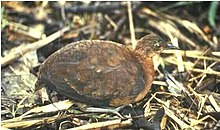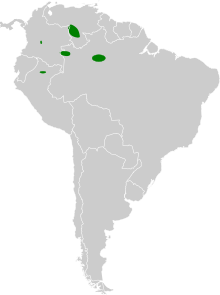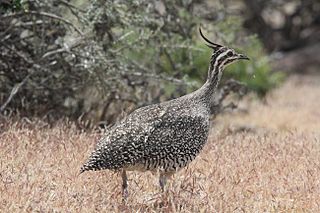
Tinamous are members of the order Tinamiformes, and family Tinamidae, divided into two distinct subfamilies, containing 46 species found in Mexico, Central America, and South America. The word "tinamou" comes from the Galibi term for these birds, tinamu. Tinamous are the only living group of palaeognaths able to fly, and were traditionally regarded as the sister group of the flightless ratites, but recent work places them well within the ratite radiation as most closely related to the extinct moa of New Zealand, implying flightlessness emerged among ratites multiple times. Tinamous first appear in the fossil record in the Miocene epoch. They are generally sedentary, ground-dwelling and, though not flightless, when possible avoid flight in favour of hiding or running away from danger. They are found in a variety of habitats, ranging from semi-arid alpine grasslands to tropical rainforests. The two subfamilies are broadly divided by habitat, with the Nothurinae referred to as steppe or open country tinamous, and the Tinaminae known as forest tinamous.
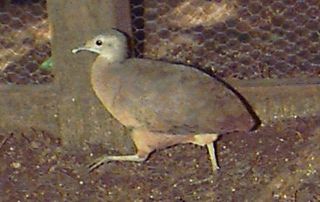
The little tinamou is a species of tinamou. It is found in Central and South America, as well as on the Caribbean island of Trinidad.

The brown tinamou is a brownish ground bird found in humid lowland and montane forest in tropical and subtropical South America.

The variegated tinamou a type of tinamou commonly found in moist forest lowlands in subtropical and tropical regions of northern South America.

Crypturellus is a genus of tinamous containing mostly forest species. However, there are the odd few that are grassland or steppe tinamous. The genus contains 21 species.

The red-legged tinamou or red-footed tinamou, is a ground-dwelling bird found in the tropics and lower subtropics of northern South America.
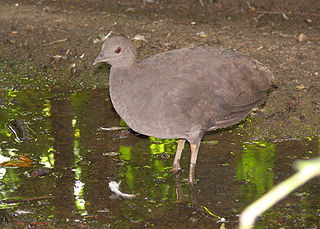
The cinereous tinamou, also known as brushland tinamou, is a type of ground bird found in swamp and lowland forests in northern South America. They have some localized names that have been used by the indigenous people such as in Amazonas where they are called inambu-pixuna, and in Pará, Brazil where they are called nambu-sujo. Also, throughout their range they are called inhambu-preto. Cinereous tinamous have been around for many centuries. They are part of the oldest families of the world today and have fossils discovered dating back tens of millions of years. Their quick reflexes play a role in their ability to survive.

The tepui tinamou is a type of ground bird found in montane moist forest on tepuis, in southeastern Venezuela.

The undulated tinamou is a species of ground bird found in a wide range of wooded habitats in eastern and northern South America.

The pale-browed tinamou is a type of tinamou found in tropical dry forests in Peru and Ecuador.
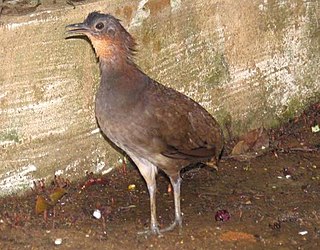
The Brazilian tinamou is a type of tinamou found in tropical moist lowland forest in regions of Amazonian South America.

The black-capped tinamou is a type of tinamou commonly found in the moist forest lowlands in subtropical and tropical regions.

The slaty-breasted tinamou or Boucard's tinamou is a type of tinamou commonly found in lowland moist forests of Mexico and Central America.

The rusty tinamou or short-billed tinamou is a type of tinamou commonly found in swamp forest in tropical regions of South America.

Bartlett's tinamou is a type of tinamou found in lowland forest in South America.

The small-billed tinamou is a type of Tinamou commonly found in dry savanna in Amazonian South America.

The barred tinamou is a type of tinamou commonly found in lowland moist forest in subtropical and tropical regions of northern South America.

The Tataupa tinamou is a type of tinamou commonly found in dry forest in subtropical and tropical regions in southeastern South America.

Tinaminae, the forest tinamous, is one of two subfamilies of the family Tinamidae, the other being Nothurinae.
